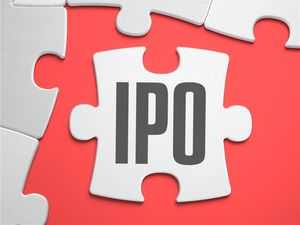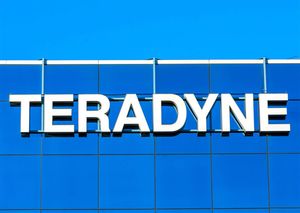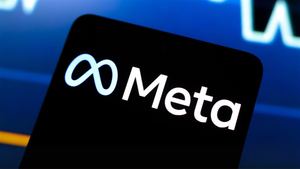
Companies can often boost their stock prices when they decide to spin off different divisions of the business. Oftentimes, this can mean shedding a non-core business or even a money-losing business into a separate entity. This can boost shareholder value as the market attempts to quantify the value of two separate companies priced as one. When the spin-off occurs, the core business usually retains a chunk of the spun-off business, thereby benefitting from the growth of the newly independent company. Here are two stocks in the computer and technology sector that will be spinning off divisions to grow shareholder value.
Western Digital: Splitting Its NAND Flash and HDD Businesses
While known for its NAND flash solid state drives (SSDs), Western Digital Co. (NASDAQ: WDC) was originally a hard disk drive (HDD) manufacturer that competed with Seagate Technology Holding PLC (NASDAQ: STX). Western Digital had the foresight to see the potential of flash drives and acquired NAND flash SSD pioneer SanDisk for $19 billion in May of 2016. While SSDs are faster, less power-consuming, and more durable than conventional HDDs, they are also more expensive and have less data storage capacity.
The AI Boom Prefers SSDs But Still Needs HDDs
The migration to cloud computing and the artificial intelligence (AI) boom required fast access to storage data. AI applications require blazing speed, and with no moving parts, NAND flash became the preferred data storage medium for applications that require low latency access, faster querying, data retrieval, and faster processing of vast amounts of data. Applications like big data analytics, high-performance computing (HPC), machine learning training, AI inferencing, and real-time data processing require NAND flash storage.
HDD storage is more suited for bulk storage activities where fast access and speed aren't critical, like data archiving, batch processing, data lakes, media and machine learning model storage. The AI boom also bolstered the demand for HDDs as the massive amounts of data still need to be archived and accessible, although on a less frequent basis.
Speculation of the Post Spin-Off
Western Digital will split into two distinct, independent, and separate public companies. The flash storage business, which primarily consists of SanDisk, will be its own public company under a new name. This business will focus solely on the flash business.
The HDD division will keep the name Western Digital and will solely focus on HDDs. There has been speculation that flash memory manufacturer Kioxia may merge with Western Digital. After all, they are the contractor that produces Western Digital's NAND flash chips in their fabs. The rumored split if the merger happens would be 43% stake owned by Kioxia, 37% owned by Western Digital, and the remaining 20% owned by shareholders. South Korea-based SK Hynix has made it clear that it would object to any merger between the two entities. The spin-off is expected to occur by the end of 2024.
Intel: Spinning Off Its Foundry Business
As a major semiconductor company in the United States that has its own fabs, Intel Co. (NASDAQ: INTC) has been a vertically integrated operation that makes its chips in-house. Unlike companies that outsource the manufacturing of their chips, like NVIDIA Co. (NASDAQ: NVDA) and Advanced Micro Devices Inc. (NASDAQ: AMD) to Taiwan Semiconductor Manufacturing Co. Ltd. (NYSE: TSM), Intel has complete control over the production and customization of its chips with less reliance on foreign supply chains. It’s also been able to secure grants via the U.S. Chips Act, which seeks to secure the U.S. semiconductor manufacturing infrastructure and supply chain. It was awarded up to $3 billion from the Biden-Harris administration under the U.S. CHIPS and Science Act.
Intel Foundry Is Losing Billions
Intel Foundry is the business that owns and operates its fabs. It holds the IP and has the high R&D costs. Intel Foundry not only produces Intel’s chips but also provides contract manufacturing services to produce chips for other companies. It would compete with the world’s largest player, Taiwan Semi. Unfortunately, one of the major downsides of owning fabs is the high capital investment and capital expenditures to build, operate, and maintain these facilities. Its foundry operations have been a financial money pit responsible for the slew of losses associated with its fab buildouts. It lost $7 billion in 2023, up from a loss of $5 billion in 2022. Unfortunately, it's expected to have its worst losses in 2024. Operating profitability is not expected until 2027.
Expanding the Amazon Partnership
Its fifth node, 18A, is healthy and continues to progress well with its two lead products, Clearwater for Servers and Panther Lake for clients. Intel is finalizing a multi-year and multi-billion dollar commitment with Amazon.com Inc. (NASDAQ: AMZN) AWS to expand its existing partnership. The deal includes a new AI fabric chip for AWS on Intel 18A and a new custom Xeon 7 chip for AWS on Intel 3.
Intel will be splitting its Intel Foundry from its Intel Products business. This will enable Intel Foundry to be more independent as the structure provides for a clear separation of external foundry customers and suppliers.






